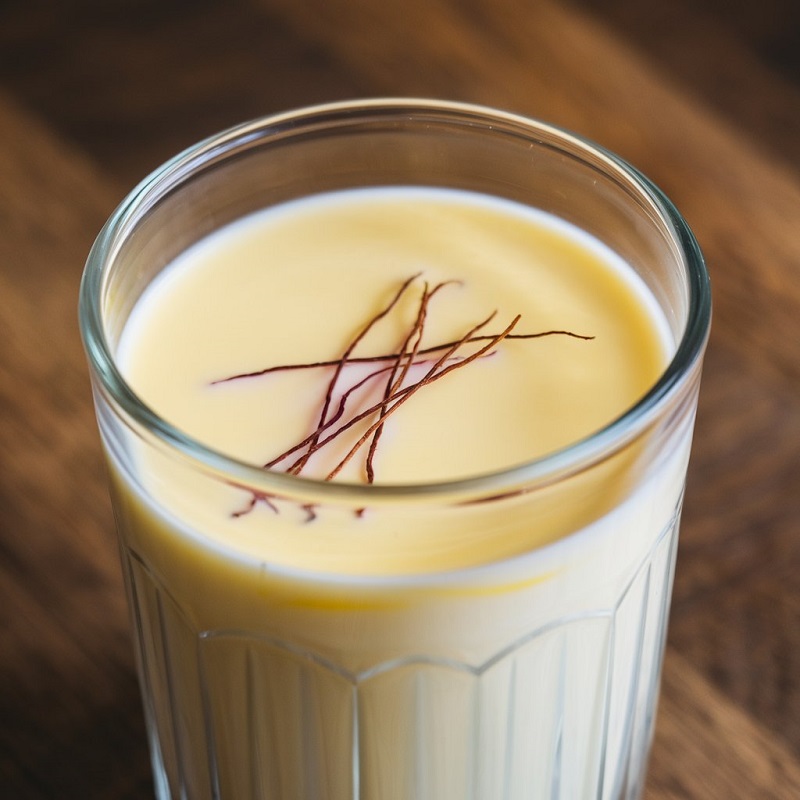Quick Answer: What Does Saffron Taste Like?
Saffron tastes floral, honey-like, and subtly earthy, with a touch of bitterness. Its warm aroma and golden hue elevate dishes, offering a luxurious, nuanced flavor.
The Golden Spice with a Mysterious Flavor
Saffron, the vivid crimson threads derived from the Crocus sativus flower, is more than just the world’s most expensive spice. It’s a centuries-old symbol of luxury and flavor, from Persian royal feasts to modern fusion dishes. But one question persists among curious food lovers: What does saffron taste like?
Its taste is delicate yet layered—a gentle blend of floral sweetness, earthy warmth, and a hint of bitterness. Understanding saffron’s taste means diving into its chemistry, cultural roots, and culinary versatility. Let’s break it all down.

What Is the Flavor Profile of Saffron?
Core Taste Notes
Saffron’s flavor is not bold like chili or sharp like citrus. Instead, it unfolds slowly, offering:
- Floral sweetness (like honeysuckle or honey)
- Earthy, hay-like warmth
- A faint touch of bitterness
- Mild metallic or mineral undertones in rare varieties
This balance of flavor makes saffron a “supportive” spice—it doesn’t overpower but elevates everything it touches.
Saffron Aroma: The Invisible Influence
The moment you crush saffron threads, you’ll notice a grassy, hay-like aroma with hints of dried flowers and subtle spice. This aroma is crucial—it enhances the perception of taste even before it hits your tongue.
Mouthfeel and Texture
Steeped saffron dissolves smoothly into dishes, creating a silky texture. There’s no grittiness, no crunch—just an infusion of flavor and color.
Scientific Breakdown: What Makes Saffron Taste Unique?
| Compound | Flavor/Aroma | Description |
| Safranal | Aroma | Hay-like, floral |
| Picrocrocin | Taste | Bitter undertone |
| Crocin | Color | Golden hue, subtle flavor |
These compounds are released when saffron is soaked or ground—hence the ritual of steeping it in warm water or milk.

Saffron Flavor by Region: Does Origin Matter?
Yes, terroir plays a huge role in saffron’s taste—just like wine.
Quality and Origin
Not all saffron is created equal. High-quality saffron from regions like Iran, Kashmir, or Spain boasts intense flavor, with vibrant red threads and minimal yellow-white parts. Iranian saffron is floral and robust, while Kashmiri saffron leans sweeter. Lower-grade saffron, often adulterated, tastes flat or metallic. The terroir—soil, climate, and altitude—shapes these differences, much like wine.
Harvesting and Processing
Saffron’s labor-intensive harvest defines its quality. Each flower yields just three stigmas, hand-picked at dawn to preserve flavor. Drying methods, whether sun-dried or gently toasted, concentrate the spice’s volatile compounds. Poor handling can mute its taste, leaving it lackluster.
Storage and Age
Saffron’s flavor fades with time, especially if stored improperly. Light, heat, and moisture are its enemies, dulling its vibrancy. Kept in an airtight container in a cool, dark place, saffron retains its potency for up to two years. Older saffron may still color dishes but lacks the full flavor spectrum.
Preparation Methods
To unlock saffron’s taste, preparation is key. Soaking threads in warm (not boiling) water or milk for 10–20 minutes releases their flavor and color. Grinding saffron into a powder intensifies its impact but requires care to avoid overuse. Cooking methods matter too—gentle simmering preserves its nuance, while high heat can turn it bitter.
| Origin | Flavor Profile | Notes |
| Iranian | Robust, earthy, aromatic | Most widely used globally |
| Kashmiri | Mellow, floral, sweet | Rare and prized |
| Spanish | Mild, balanced | Great for paella |
| Afghan | Nutty, slightly fruity | Gaining popularity |
Each region imparts its own flavor “accent” due to soil, climate, and drying methods.
How Does Saffron Taste in Different Cuisines?
Saffron is a global flavor ambassador, and its taste shifts with the ingredients around it:
- Persian Cuisine: Perfumes rice, stews, and desserts with sweet and savory contrast
- Spanish Paella: Adds warmth and depth alongside seafood and chorizo
- Indian Biryani: Enhances richness with a honeyed touch
- Moroccan Tagines: Blends with cinnamon, apricots, and lamb
- Risotto alla Milanese: Creamy and golden with delicate floral notes
Saffron Flavor Pairings: Best Matches in the Kitchen
| Pairs Well With | Why It Works |
| Seafood, Chicken | Absorb saffron’s delicate flavors |
| Milk, Cream, Yogurt | Amplifies saffron’s sweetness |
| Almonds, Pistachios | Adds richness, complements floral notes |
| Rosewater, Cardamom | Shared aromatic profiles |
| Lemon, Tomatoes | Provide acidic contrast and brightness |
Avoid: Strong spices like cloves, star anise, or cumin—they overpower saffron’s subtlety.
Saffron in Literature, History & Symbolism
- The Iliad referenced saffron robes of gods
- Cleopatra bathed in saffron for fragrance and skin glow
- Indian weddings use saffron in sweet rice (zarda)
- In ancient Persia, saffron dyed royal carpets and perfumed banquet halls
Saffron’s taste is just one part of its rich story—a symbol of joy, purity, and opulence.
Common Mistakes When Using Saffron
- Using too much: Can taste medicinal or bitter
- Not blooming saffron: Without soaking, its full flavor is lost
- Buying fake or low-grade saffron: Can taste metallic or grassy
- Storing it improperly: Light and air degrade its potency
❓ Common Questions and Misconceptions
Does Saffron Taste Like Its Color?
Not at all. While it looks fiery and bold, saffron is subtle, not spicy—think of it as aromatic gold, not chili red.
Can Saffron Be Substituted?
Turmeric or safflower mimics its color, not its flavor. There’s no true substitute for saffron’s taste.
Why Does Saffron Taste Bitter to Some?
Picrocrocin gives saffron a slightly bitter note. Overuse or poor-quality saffron magnifies this. Also, some people are more sensitive to bitterness genetically.
Is Saffron Worth the Price?
Yes—because a little goes a long way. Just a pinch flavors an entire dish. Think of it like liquid gold for your tastebuds.
How to Taste and Use Saffron Properly
How to Taste Saffron on Its Own:
- Soak 4–5 threads in 1 tablespoon of warm water or milk.
- Wait 15 minutes.
- Sip and savor the floral, slightly bitter flavor.
Home Uses to Experience the Flavor:
- Saffron Tea: Steep 5 threads with honey
- Saffron Rice: Add soaked threads to basmati rice
- Saffron Custard: Infuse milk before making pudding or flan
How to Choose and Store Saffron
Buying High-Quality Saffron:
- Look for deep red threads (no yellow or white)
- Strong aroma—like hay, honey, and flowers
- Trusted brands like Mehr Saffron, Krokos Kozanis, or Zaran Saffron
Storing Saffron:
- Use an airtight glass container
- Keep in a cool, dark place
- Avoid plastic and moisture
- Best used within 2 years for full flavor
Conclusion: A Flavor Worth Savoring
So, what does saffron taste like? It’s a delicate symphony of floral sweetness, earthy warmth, and just a hint of bitterness—designed to elevate everything from rice to desserts. Whether you’re preparing a Persian tahdig or a Spanish paella, saffron’s flavor offers more than taste—it brings culture, elegance, and centuries of culinary tradition to your table.
Use it wisely, and it will never disappoint.




